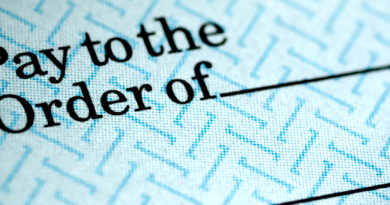All About Funeral & Sympathy Flowers

Photo © iStock.com/GreenAppleNZ
People often send a lovely floral arrangement to the immediate family after learning of the death of a loved one, but might feel confused about which type of arrangement to send and where to have it delivered. This article explores the purposes and differences between funeral flowers and sympathy flowers, who typically sends these floral arrangements, and when and where you should generally choose to have them delivered.
What are Funeral Flowers?
As the name suggests, funeral flowers comprise the floral arrangements created for use during the deceased’s actual funeral or memorial service (as shown in the photo above). Typically, funeral flowers and plants consist of larger, formal-looking arrangements for use during the funeral or memorial service, as opposed to sympathy flowers (see below) or the flowers sent on other occasions, such as Mother’s Day, birthdays, Valentine’s Day, etc.
Who Should Send Funeral Flowers?
In general, florists create specific funeral flower arrangements based on the sender’s degree of closeness to the deceased, which also generally determines where those flowers are placed for the service. For example, the funeral flowers resting on or nearest to the casketed remains — such as casket sprays; casket pillows; standing sprays, wreaths, crosses and hearts; and flowers and plants in vases or baskets — usually represent members of the immediate family (spouse/partner, children, siblings, parents, stepparents) and/or the extended family (grandparents, uncles/aunts, cousins, grandchildren, etc.).
Often, the immediate family will order the desired funeral flowers on behalf of the entire family during the funeral arrangement conference, and their chosen funeral provider will take care of the details. If not, then someone will generally contact you ahead of time to do so.
Depending upon the type and number of funeral flowers received, the arrangements sent by the deceased’s coworkers, closest friend(s), associates representing professional and/or fraternal organizations, etc., appear next (relative to the remains). These funeral flowers typically comprise standing sprays, wreaths, crosses and hearts; and flowers and plants in vases or baskets. Generally, the business for which the deceased worked, for example, will send a single funeral flower arrangement on behalf of the entire company and its employees versus several individual arrangements sent by coworkers.
Because the family and/or funeral provider might desire a similar type or color scheme for the funeral flowers to better reflect the deceased or to create a particular service theme, you should check with the funeral provider or the family before ordering funeral flowers. As noted above, if you are a member of the immediate or extended family, you will likely be contacted ahead of time about such details.
When Should You Send Funeral Flowers?
Because funeral flowers feature prominently in the service itself, they obviously must arrive before the funeral or memorial service. Ideally, funeral flowers should arrive about 24 hours before the service to provide funeral home and mortuary staff time to unpack, prepare and transport the arrangement. If you work directly with a local florist (relative to where the service will take place, not where you live) or with a national flower provider, such as FTD or 1-800-Flowers, you should inform the florist of the service date and time, as well as the address, to ensure timely delivery.
Many florists also offer a variety of funeral flower arrangements available for same-day delivery. If you must order funeral flowers for delivery the same day, then they should arrive at least two hours prior to the funeral or memorial service, at a minimum (and more time is better). While less than ideal, this provides those setting up the funeral or memorial service with some time to unpack, prepare and transport the floral arrangement. Moreover, you and/or the florist should contact the provider and let them know to expect the funeral flowers.
Where Should You Send Funeral Flowers?
If you wish to send funeral flowers, then you should generally arrange for their delivery directly to the funeral provider. In most cases, families work with a funeral home or mortuary whose staff will be well versed in floral deliveries and how to transport these arrangements to the funeral or memorial service location (if offsite). Even when the funeral or memorial service will occur at a different location, such as a place of worship, a crematory, a cemetery or some other location, you should generally send your funeral flowers directly to the provider or the person responsible for executing the service arrangements.
Do not send funeral flowers directly to the immediate family, who already have enough weighing on their hearts and minds at this difficult time. Doing so merely creates an additional burden for them to deal with given their grief and the many details and decisions they must make leading up to the actual funeral or memorial service.
What are Sympathy Flowers?
Unlike funeral flowers, sympathy flowers comprise the floral arrangements sent directly to those mourning a death to offer the sender’s heartfelt condolences. Typically, sympathy flowers and plants are similar in size, style and expense to the arrangements sent on other special or important occasions, such as Mother’s Day, birthdays, Valentine’s Day, etc.
Who Should Send Sympathy Flowers?
People often send sympathy flowers and plants following a death for a variety of reasons, including honoring the person who died, conveying their condolences, offering surviving loved ones a little brightness or cheeriness at a difficult time, to offer support, etc. If you’re thinking about sending sympathy flowers to someone who recently experienced a death, then you should do so, regardless of your degree of closeness to the deceased or immediate family. Almost everyone mourning a death will appreciate the receipt of fresh flowers or a green plant, and the thought and emotion behind this gesture.
When & Where Should You Send Sympathy Flowers?
If you have not experienced the death of a loved one that required making funeral or memorial service arrangements, then understand that the period leading up to the service itself can prove challenging and hectic for the immediate family. In addition to the many tasks families must perform immediately after a death, planning a funeral, burial or memorial service often requires traveling to the service provider, the deceased’s residence, the hospital or hospice, an attorney’s office, etc.
Thus, you should make sure the recipient (or someone else) will be at the delivery location to receive your sympathy flowers in a timely fashion before ordering. Do not assume that the recipient will receive them, or even know of their delivery if left outside, given everything else preoccupying his or her mind right now.
A better option: Arrange delivery to your home, or purchase them directly from your local florist, and then deliver your sympathy flowers personally. Not only can you guarantee that your heartfelt purchase won’t wither and wilt unseen outside, but you can also offer the bereaved a far more meaningful gesture at this difficult time: the gift of your physical presence. Nothing, not even flowers or plants, can replace the comfort, support and meaning conveyed by one human being making time to comfort and console someone else in pain following the death of a loved one.







